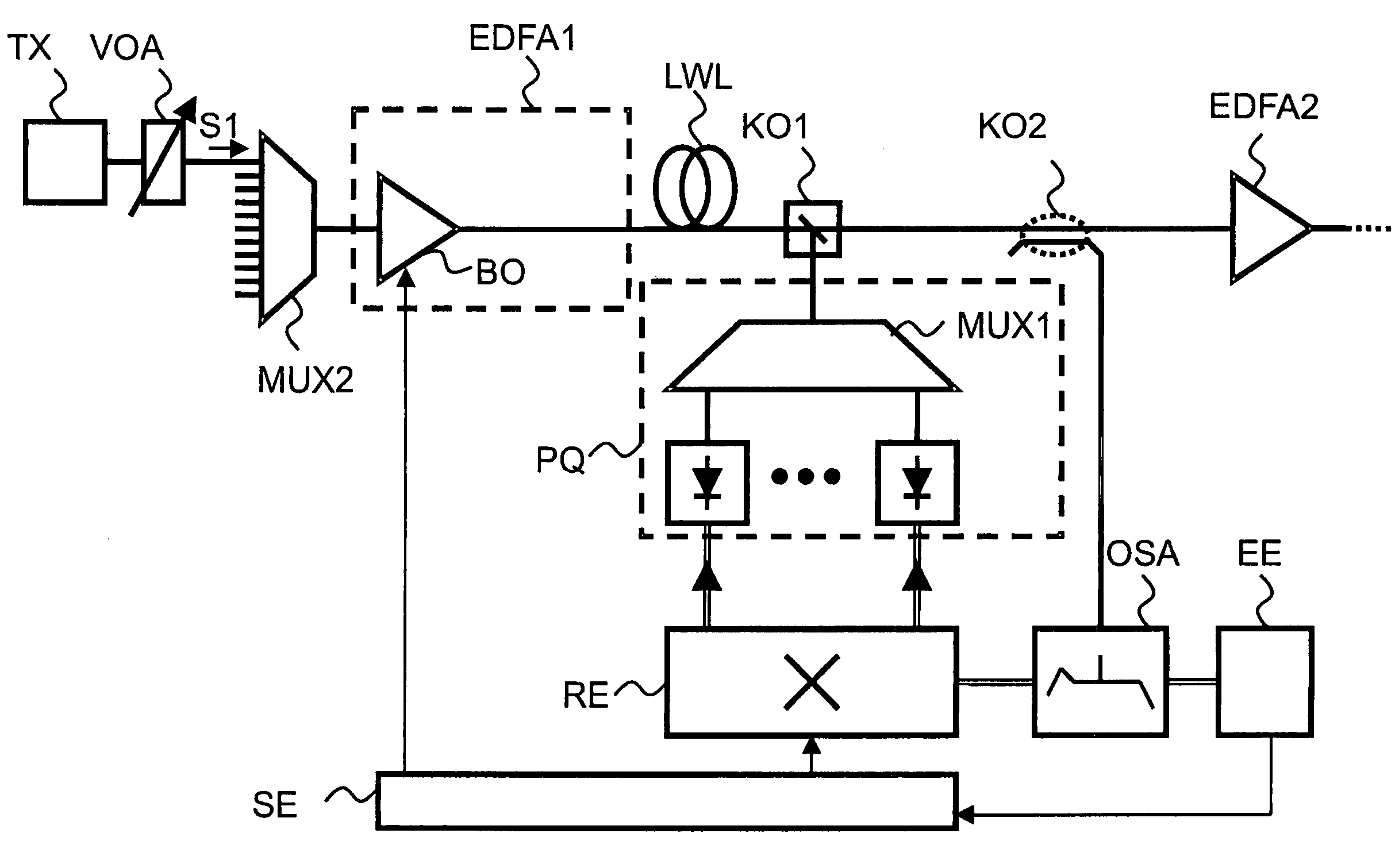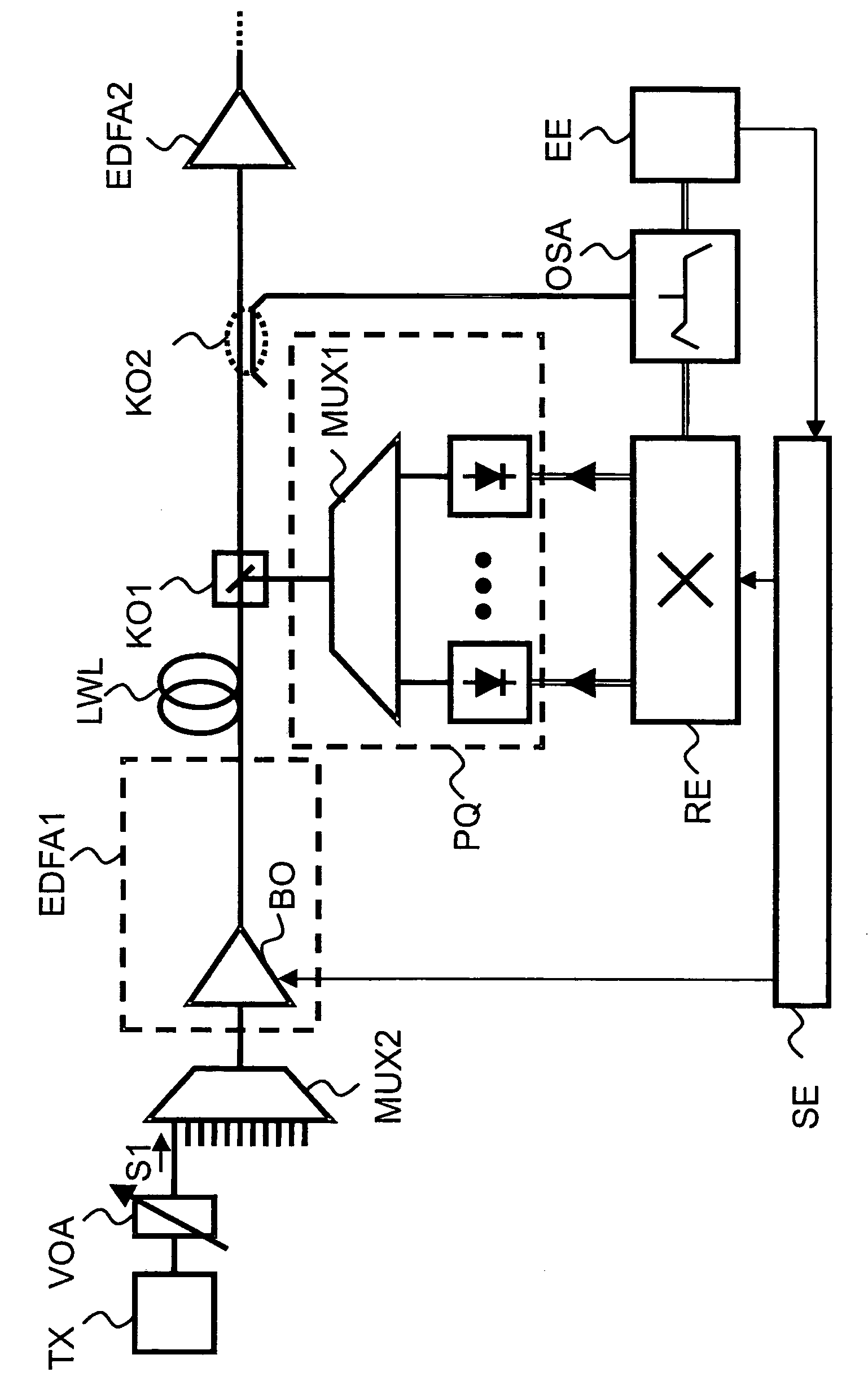Method for determining the gain spectrum of a Raman amplifier in a WDM-transmission system
a technology of raman amplifier and gain spectrum, which is applied in the direction of electromagnetic transmission, transmission monitoring, optical resonator shape and construction, etc., can solve the problems of limited system improvement which can be obtained, degrade the signal quality, and inefficient utilization, and achieve the effect of simple adjustmen
- Summary
- Abstract
- Description
- Claims
- Application Information
AI Technical Summary
Benefits of technology
Problems solved by technology
Method used
Image
Examples
Embodiment Construction
[0029]As an exemplary embodiment, consider an arrangement as shown in FIG. 1 for carrying out the method in accordance with the invention, which shows a first transmission section as a segment of a WDM transmission system. Connected to this transmission section is a Raman amplifier, which has a pumping source PQ with several pumping signals. For the purpose of generating the Raman pump radiation, the pumping source PQ at the end of the link section uses four laser diodes. Pumping signals from the pumping source PQ are combined together with the help of a wavelength-selective multiplexer MUX. The laser diodes generate signals with wavelengths of 1423 nm, 1436 nm, 1453 nm and 1467 nm. A band filter KO1 feeds the pump signals into the signal path or into an OWG transmission fiber, as applicable, in the opposite direction from the direction of propagation of the transmitted signals.
[0030]Downstream from the band filter KO1 of the pumping source PQ in the signal path is a coupler KO2. Wi...
PUM
 Login to View More
Login to View More Abstract
Description
Claims
Application Information
 Login to View More
Login to View More - R&D
- Intellectual Property
- Life Sciences
- Materials
- Tech Scout
- Unparalleled Data Quality
- Higher Quality Content
- 60% Fewer Hallucinations
Browse by: Latest US Patents, China's latest patents, Technical Efficacy Thesaurus, Application Domain, Technology Topic, Popular Technical Reports.
© 2025 PatSnap. All rights reserved.Legal|Privacy policy|Modern Slavery Act Transparency Statement|Sitemap|About US| Contact US: help@patsnap.com


